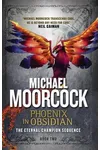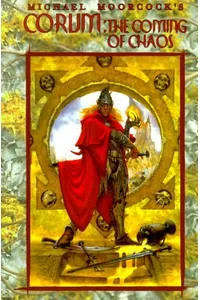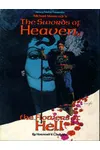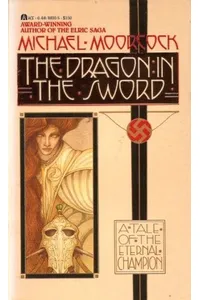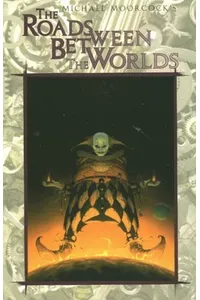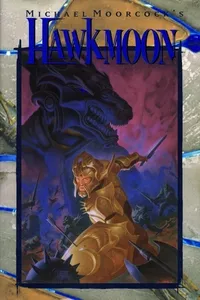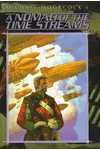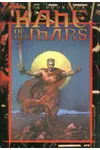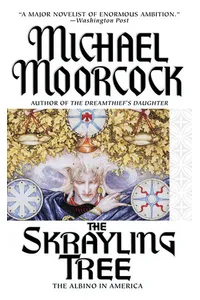Step into the mesmerizing multiverse of the Eternal Champion, where a timeless hero battles cosmic forces in a whirlwind of fantasy and science fiction! Created by Michael Moorcock, this sprawling series follows the Eternal Champion, a figure reborn across countless worlds to maintain the delicate balance between Law and Chaos. With its subversive take on genre tropes and richly philosophical undertones, it’s a must-read for speculative fiction fans.
From the brooding Elric of Melniboné to the enigmatic Jerry Cornelius, the Eternal Champion’s incarnations weave tales of tragedy, heroism, and existential struggle. Moorcock’s groundbreaking multiverse concept has captivated readers for decades, blending sword-and-sorcery with metaphysical musings in a way that feels both epic and deeply personal.
How Eternal Champion Began
Michael Moorcock, a titan of British fantasy, birthed the Eternal Champion in the late 1950s, with the concept crystallizing in the 1962 novella published in Science Fantasy. Frustrated by the predictable heroism of Tolkien and Conan-style tales, Moorcock envisioned a flawed, reluctant hero bound by fate. His multiverse—a web of parallel universes shaped by Law and Chaos—emerged as a canvas for exploring morality, identity, and free will. The 1970 novel The Eternal Champion expanded this vision, introducing John Daker as Erekosë and setting the stage for a saga that would span dozens of books.
The Heart of Eternal Champion
The series is a tapestry of interconnected novels, with key entries like The Eternal Champion (1970), where John Daker, pulled from modern Earth, becomes Erekosë and grapples with a genocidal war against the Eldren. Elric of Melniboné (1972) introduces Elric, a tormented albino emperor wielding Stormbringer, a soul-drinking sword. The History of the Runestaff (1967–1969) follows Dorian Hawkmoon in a dystopian future, while The Cornelius Chronicles (1965–1977) casts Jerry Cornelius as a chaotic, gender-ambiguous trickster navigating a psychedelic multiverse.
Moorcock’s themes dive deep into the human condition—free will versus destiny, the cost of power, and the moral ambiguity of war. His multiverse, a dazzling array of dimensions from medieval realms to far-future galaxies, is unified by the Cosmic Balance, a force ensuring neither Law nor Chaos dominates. Unlike traditional fantasy’s clear-cut heroes, Moorcock’s Champions are antiheroes, often doomed by their choices, making their stories resonate with raw emotional weight.
The series’ style is brisk and vivid, with short novels (often under 250 pages) packed with action, introspection, and genre-blending flair. From sword fights to time travel, Moorcock’s refusal to adhere to one genre keeps readers on their toes, while recurring motifs—like the Black Sword or the von Bek family—tie the sprawling narrative together.
Why Eternal Champion Resonates
The Eternal Champion’s influence on speculative fiction is profound. Moorcock’s multiverse concept, credited with popularizing the term, inspired writers like Neil Gaiman and George R.R. Martin, who embraced his gritty, morally complex storytelling. The series’ subversion of heroic archetypes paved the way for grimdark fantasy, while its blend of fantasy, sci-fi, and philosophy broadened the genre’s horizons. Fans cherish its emotional depth and interconnected narratives, with Elric’s tragic saga often hailed as a cornerstone of modern fantasy.
Despite its age, the series remains fresh, thanks to Moorcock’s revisions and reprints, like the 2013–2015 Gollancz editions. Its cult status thrives among readers who relish its bold ideas and compact storytelling, proving that great stories don’t need to be doorstoppers.
- First Published: 1962 (novella), 1970 (novel)
- Key Series: Elric, Corum, Hawkmoon, Cornelius
- Notable Award: Moorcock named in The Times’ 2008 list of top British writers
Dive into The Eternal Champion or Elric of Melniboné and lose yourself in a multiverse where every choice echoes across eternity!

